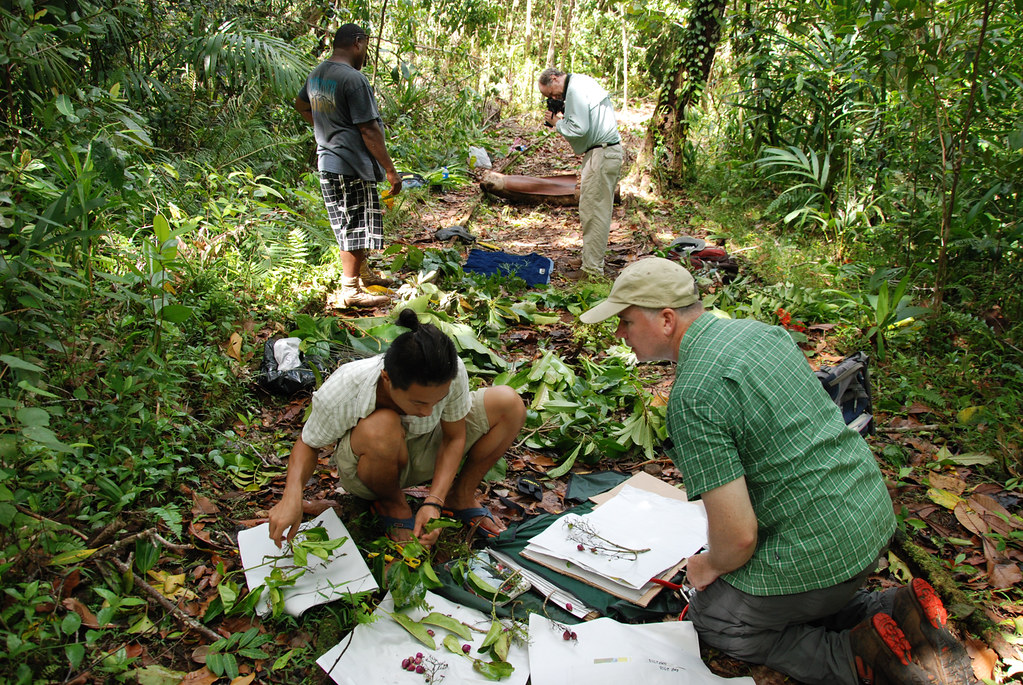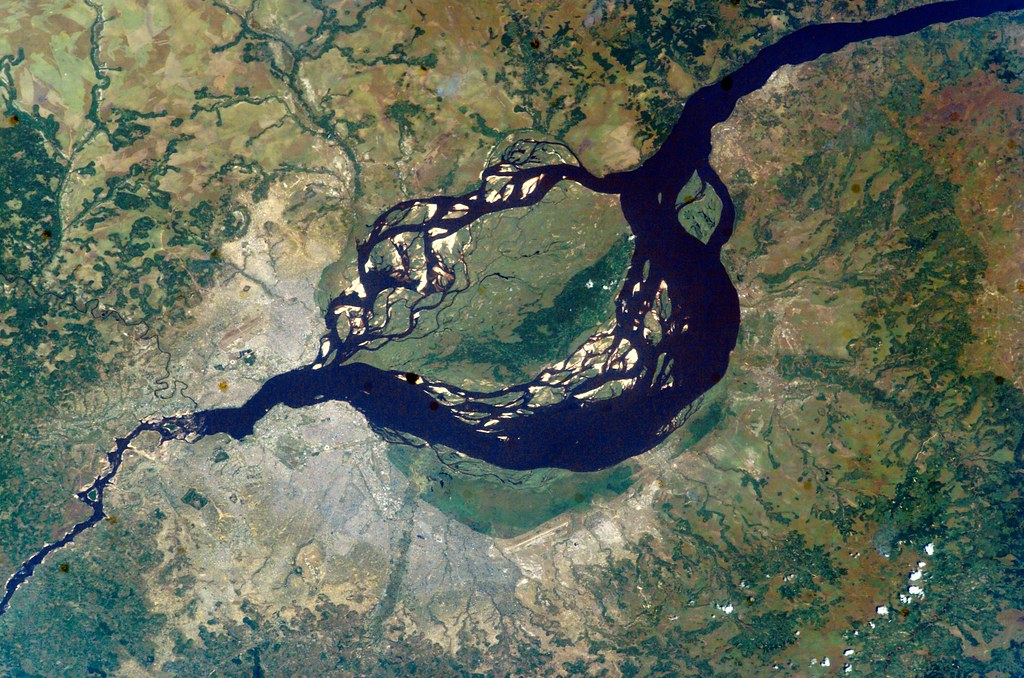Assessing ecosystem health through environmental analytics is crucial to understanding the impact of human activities on our planet’s natural resources. Environmental scientists use various techniques to analyze data and monitor ecosystems, including ecological monitoring and data analysis. In this article, we will explore the importance of environmental analytics in assessing ecosystem health, its impact on biodiversity, climate change, and conservation, as well as the tools and techniques used to monitor environmental health.

Introduction
Ecosystems are vital for the survival of our planet’s natural resources, and their health is crucial to our sustainability. The assessment of ecosystem health through environmental analytics is a powerful tool that helps us understand the current state of ecosystems and identify areas that need attention. Environmental analytics involves the use of various tools and techniques to collect, process, and analyze environmental data to gain insights into the health of ecosystems. In this article, we will explore how environmental analytics is used to assess ecosystem health and support sustainable ecosystem management.
Environmental analytics plays a crucial role in assessing ecosystem health by providing insights into the impact of human activities on the environment. This helps scientists detect changes in ecosystems, such as changes in biodiversity and habitat loss, and identify areas that are at risk of environmental degradation. By providing insights into the impact of human activities on ecosystems, environmental analytics can help scientists develop strategies for conserving biodiversity and protecting endangered species, mitigating the impact of climate change, and conserving natural resources for future generations.
In the next section, we will discuss environmental analytics for ecosystem health assessment, including the definition of environmental analytics, its role in assessing ecosystem health, and the types of environmental analytics tools and techniques used.
Understanding the Importance of Assessing Ecosystem Health
Assessing ecosystem health is essential to preserving the delicate balance of our planet’s natural resources. Ecosystems provide a wide range of services that are essential to human well-being, including clean air and water, food, and the regulation of climate. By assessing ecosystem health, we can identify areas that are at risk of environmental degradation and take action to prevent further damage.
Environmental analytics plays a critical role in assessing ecosystem health by providing insights into the complex relationships between the environment and human activities. By collecting and analyzing data on environmental parameters, we can gain a better understanding of how human activities are impacting ecosystems. This understanding is essential to developing strategies for conservation, management, and sustainability.
The purpose of assessing ecosystem health is to ensure that ecosystems continue to provide essential services to human well-being. By identifying areas that are at risk of environmental degradation, we can take action to prevent further damage and promote the restoration of critical habitats. Additionally, by predicting future changes, we can develop strategies for adapting to the impacts of climate change and other environmental stressors.
Environmental Analytics for Ecosystem Health Assessment
Environmental analytics has become a crucial tool for ecosystem health assessment in recent years, thanks to advances in technology and data science. Environmental analytics involves using advanced analytical tools and techniques to analyze environmental data and gain insights into ecosystem health. These tools and techniques include remote sensing, GIS, machine learning, and big data analytics, among others.
One of the key benefits of environmental analytics is its ability to monitor changes in the environment, such as changes in temperature, water quality, and vegetation cover. This allows environmental scientists to detect changes in the ecosystem that may be indicative of health issues and to develop strategies for mitigating those issues. For example, if water quality monitoring tools detect high levels of pollution in a river, scientists can work to identify the source of the pollution and develop strategies for reducing it.
In addition to monitoring changes in the environment, environmental analytics can also help identify patterns and trends in environmental data. This is important because it allows us to understand the underlying processes that affect ecosystem health. For example, by analyzing data on temperature and precipitation, environmental scientists can develop models to predict how climate change will impact ecosystems in the future.
Finally, environmental analytics can help us predict future changes in the environment, which is crucial for preparing for and mitigating the impacts of climate change and other environmental stressors. By using machine learning algorithms to analyze historical environmental data, scientists can develop models to predict how ecosystems will respond to changes in the environment. This can help inform decision-making and policy development to ensure that ecosystems are protected and conserved for future generations.

Key Environmental Monitoring Tools for Assessing Ecosystem Health
Environmental monitoring is a crucial component of environmental analytics. It involves collecting and analyzing data on various environmental parameters, such as air quality, water quality, soil quality, and biodiversity. Environmental monitoring provides valuable information on the state of the environment and helps identify changes that could affect ecosystem health.
Air Quality Monitoring Tools
Air quality monitoring tools are used to measure the levels of pollutants in the air, such as particulate matter, ozone, nitrogen oxides, and sulfur dioxide. These pollutants can have adverse effects on both human health and the environment, such as respiratory problems, acid rain, and smog. Air quality monitoring tools include:
- Sensors: These devices are placed at different locations and measure pollutant levels in real-time. They are often used in urban areas to monitor air quality.
- Satellite Imagery: Satellites can capture images of the Earth’s atmosphere and detect pollutants in the air. This technology is often used to monitor air quality on a large scale.
- Mobile Monitoring Units: These units are mounted on vehicles and move around to measure air quality at different locations. They can provide detailed information on pollutant levels in specific areas.
Water Quality Monitoring Tools
Water quality monitoring tools are used to measure the levels of pollutants in water bodies, such as rivers, lakes, and oceans. These pollutants can have adverse effects on aquatic life and human health, such as fish kills and waterborne diseases. Water quality monitoring tools include:
- Sensors: These devices can measure different parameters of water quality, such as pH, dissolved oxygen, and temperature. They can be placed in water bodies to monitor water quality in real-time.
- Water Sampling: Water samples can be collected from different locations and analyzed in laboratories to determine the levels of pollutants in water bodies.
- Remote Sensing: Satellites can capture images of water bodies and detect changes in water quality over time. This technology is often used to monitor large water bodies such as oceans.
Soil Quality Monitoring Tools
Soil quality monitoring tools are used to measure the physical, chemical, and biological properties of soil. These properties affect the ability of soil to support plant growth and other ecosystem functions. Soil quality monitoring tools include:
- Soil Testing Kits: These kits can be used to determine the nutrient content and pH level of soil. They are often used by farmers to determine the health of their soil.
- Soil Sensors: These devices can be placed in soil to measure soil moisture, temperature, and other parameters. They can provide real-time data on soil health and help farmers make informed decisions about irrigation and fertilization.
- Remote Sensing: Satellites can capture images of land and detect changes in soil properties over time. This technology is often used to monitor large areas of land for changes in soil health.
Biodiversity Monitoring Tools
Biodiversity monitoring tools are used to measure the diversity and abundance of species in an ecosystem. Biodiversity is essential for ecosystem function and provides numerous benefits to human well-being, such as food, medicine, and recreation. Biodiversity monitoring tools include:
- Camera Traps: These cameras can be set up in different locations and capture images of animals as they move around. They are often used to study large mammals such as tigers and elephants.
- Acoustic Sensors: These devices can record animal sounds and help identify different species based on their unique vocalizations. They are often used to monitor bird populations in forests.
- DNA Sequencing: This technology can be used to identify different species based on their DNA. It is often used to study microbial communities in soil and water bodies.

Ecological Analytics for Ecosystem Health Assessment
Ecological analytics is a crucial aspect of environmental analytics and plays a significant role in assessing ecosystem health. It involves using various advanced tools and techniques to analyze ecological data and gain insights into ecosystem health. Ecological analytics tools include landscape ecology, ecological modeling, and ecosystem services valuation, among others.
One of the primary advantages of ecological analytics is its ability to help us understand the complex interactions between different elements of an ecosystem, such as plants, animals, and soil. By analyzing ecological data, scientists can identify ecological processes that affect ecosystem health, such as nutrient cycling and energy flow. This information can be used to develop more accurate models of ecosystem health and to identify areas that require conservation efforts.
Another advantage of ecological analytics is that it allows us to evaluate the ecosystem services provided by ecosystems. Ecosystem services are the benefits that humans derive from healthy ecosystems, such as carbon sequestration and water regulation. By analyzing data on ecosystem services, scientists can identify areas that are at risk of environmental degradation and develop strategies for conserving these vital services.
In addition to these advantages, ecological analytics also plays a crucial role in developing sustainable ecosystem management strategies. By providing insights into the impact of human activities on ecosystems, ecological analytics can help us develop more effective strategies for managing natural resources and conserving biodiversity.
Overall, ecological analytics is a vital tool for assessing ecosystem health, evaluating ecosystem services, and developing sustainable ecosystem management strategies. Its ability to provide insights into complex ecological systems makes it an essential component of environmental analytics.

Sustainable Ecosystem Management through Environmental Analytics
Sustainable ecosystem management is a comprehensive approach to managing ecosystems that aims to balance human needs with the needs of nature. Environmental analytics plays a crucial role in supporting sustainable ecosystem management by providing insights into ecosystem services that can be used in a way that benefits both humans and nature.
Environmental analytics can help identify areas that need attention, such as areas with high levels of pollution or habitat destruction, to ensure sustainable ecosystem management practices. It can also evaluate the impacts of different management strategies, such as restoration projects or conservation programs, to determine which approaches are most effective. Furthermore, environmental analytics can help monitor the effectiveness of management practices over time, ensuring that they are achieving the desired outcomes.
One way that environmental analytics can support sustainable ecosystem management is through the use of data-driven decision-making. By using data to inform management decisions, we can ensure that our actions are based on objective evidence rather than assumptions or intuition. This can lead to more effective, efficient, and sustainable management practices.
Another way that environmental analytics can support sustainable ecosystem management is through the identification of ecosystem services. Ecosystem services are the benefits that people receive from ecosystems, such as clean water, clean air, and food. By identifying which ecosystem services are most important to people, we can prioritize management actions that promote those services.
In addition, environmental analytics can help us understand how human activities are impacting ecosystems and identify ways to mitigate those impacts. For example, by analyzing data on air and water quality, we can identify sources of pollution and develop strategies to reduce their impact on ecosystems.
Overall, environmental analytics is a critical tool for supporting sustainable ecosystem management. By providing insights into ecosystem services and the impacts of human activities on ecosystems, environmental analytics can help us make more informed decisions about how to manage our natural resources in a way that benefits both humans and nature.

Case Studies and Success Stories
Environmental analytics has been used successfully in numerous ecosystem management programs worldwide. For instance, in the Great Barrier Reef, environmental analytics has been used to monitor water quality and coral health, helping to identify areas of the reef that need attention. The program leveraged a combination of air and water quality monitoring tools, ecological modeling, and satellite imagery to provide a comprehensive view of the ecosystem.
Another example is a small fishing community in the Pacific Northwest that was struggling to maintain their traditional way of life due to declining fish populations. The community relied heavily on fishing for both sustenance and income, but overfishing and habitat destruction had severely impacted the local salmon population. To address this problem, an environmental analytics program was implemented that involved using water quality monitoring tools and ecological modeling to assess the health of the local river system and identify areas that were critical for salmon spawning. By using this data, local stakeholders were able to develop a sustainable fishing plan that limited catch quotas and protected critical spawning areas. Over time, a significant improvement in the health of the local salmon population was seen, which not only helped sustain the community’s way of life but also had positive ripple effects throughout the ecosystem.
In the Amazon rainforest, environmental analytics has been used to monitor deforestation and identify areas that are at risk of illegal logging. Through the use of satellite imagery and machine learning, environmental scientists can detect changes in forest cover and identify areas that are at risk of deforestation. This data is used to inform conservation efforts and support sustainable land use practices.
In Kenya, environmental analytics has been used to monitor wildlife populations and inform conservation efforts. By using data from GPS tracking devices and remote sensing technologies, environmental scientists can monitor animal movements and identify areas that are important for wildlife habitat. This data is used to develop targeted conservation strategies that help protect endangered species and promote biodiversity.
These success stories demonstrate the power of environmental analytics in supporting sustainable ecosystem management and conservation efforts. By providing a comprehensive view of ecosystem health and identifying areas that need attention, environmental analytics can help us to protect our natural resources and preserve them for future generations.

Future Developments in Environmental Analytics
As environmental analytics continues to evolve, there are several emerging trends that have the potential to shape its future. One of these trends is the use of machine learning and artificial intelligence (AI) to analyze environmental data. AI algorithms can help identify patterns and relationships in environmental data that would be difficult to detect using traditional methods. This can lead to more accurate models of ecosystem health and better-informed decisions about conservation and natural resource management.
Another emerging trend is the development of new monitoring technologies. For example, drone technology is being used to collect data on ecosystems from the air, providing detailed and accurate information on the health of vegetation, waterways, and wildlife. Similarly, advances in sensor technology are enabling more accurate and efficient monitoring of air and water quality.
In addition, there is a growing recognition of the importance of integrating social and economic data into ecosystem health assessments. This can provide valuable insights into the relationship between human activities and ecosystem health, and help identify strategies for managing natural resources in a sustainable and equitable way.
Together, these emerging trends have the potential to revolutionize the way we assess ecosystem health and support sustainable ecosystem management. By leveraging the power of machine learning and AI, developing new monitoring technologies, and integrating social and economic data into ecosystem health assessments, we can gain a more comprehensive understanding of the complex relationships between human activities and the environment.
How to Use Environmental Analytics to Assess Ecosystem Health
To effectively use environmental analytics to assess ecosystem health, consider the following tips:
Use Multiple Tools and Techniques
Environmental analytics involves the use of a wide range of tools and techniques for collecting and analyzing environmental data. It is essential to use multiple tools and techniques to get a comprehensive view of ecosystem health. Integration of data from different sources is also crucial as it can give a more accurate representation of the ecosystem.
Consider Spatial and Temporal Scales
The ecosystem operates at various spatial and temporal scales, and environmental data can significantly vary depending on these scales. When using environmental analytics to assess ecosystem health, consider the scales at which data is collected and use appropriate analytical techniques. This consideration ensures that the analysis is reliable and accurate.
Collaborate with Experts
Assessing ecosystem health through environmental analytics is a complex process that requires expertise in multiple fields. Collaboration with experts in ecology, data science, and environmental policy is crucial to ensure accuracy and effectiveness of the analysis. Working with experts can also provide a different perspective on the data and improve the overall quality of the analysis.
Conclusion
In conclusion, the use of environmental analytics is crucial in assessing ecosystem health and identifying areas that need attention. It enables us to gain insights into the impact of human activities on the environment and provides us with data-driven strategies for managing natural resources. Environmental analytics is a powerful tool that supports sustainable ecosystem management, ensuring that ecosystems continue to provide critical services that support human well-being for generations to come.
As we have seen in this article, environmental analytics encompasses a wide range of tools and techniques, including air quality monitoring, water quality monitoring, soil quality monitoring, and biodiversity monitoring. These tools have been successfully used to assess and monitor ecosystem health in various regions and ecosystems worldwide.
While environmental analytics has already made significant progress in improving our understanding of ecosystem health, there is still much work to be done. Emerging trends and developments in environmental analytics, such as the use of artificial intelligence and machine learning, offer exciting opportunities for further research and innovation in this field. By continuing to invest in environmental analytics, we can ensure that we have the tools and knowledge necessary to protect our planet’s natural resources and promote sustainable ecosystem management.
Therefore, we encourage all stakeholders in ecosystem management and conservation efforts to consider the use of environmental analytics in their decision-making processes. By incorporating environmental analytics into our conservation and management efforts, we can ensure that we are making informed decisions that will have a positive impact on the health of our planet’s ecosystems.
Next Steps
Round Table Environmental Informatics (RTEI) is a consulting firm that helps our clients to leverage digital technologies for environmental analytics. We offer free consultations to discuss how we at RTEI can help you.


